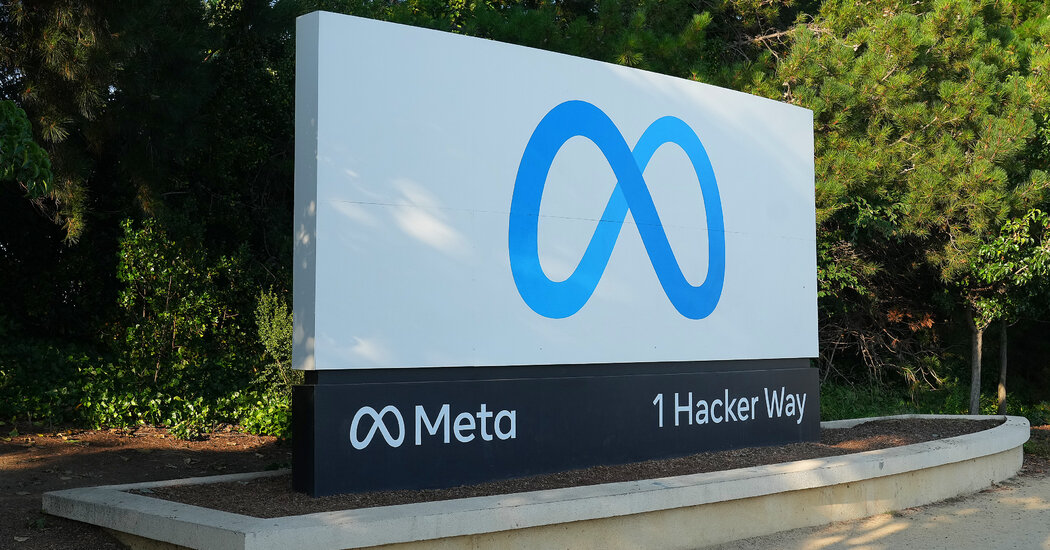Business
The Impact of Political Landscape on Cryptocurrency Markets
Explore how changes in the political landscape influence cryptocurrency markets. This article delves into the relationship between government policies, regulations, and the volatility of digital currencies, offering insights for investors and enthusiasts alike.

In Today’s Issue
Jason Leibowitz, the head of private wealth at Hashnote, delves into the current political landscape in the United States and its potential ramifications for the cryptocurrency industry. In our ‘Ask an Expert’ section, Connor Farley, CEO of Truvius, shares insights about Millennials’ growing interest in crypto investments and offers guidance on how financial advisors can effectively engage with this demographic.
Welcome to Crypto for Advisors, CoinDesk’s weekly newsletter designed to unpack digital assets for financial advisors. Subscribe here to receive it every Thursday.
The Election Effect and Beyond: What’s Driving Crypto Markets?
A significant factor influencing the current cryptocurrency market is the upcoming presidential election in November. This critical race, along with several recent developments, has cultivated a bullish sentiment towards digital assets. The CoinDesk 20 Index, a trusted indicator of the broader crypto market performance, has experienced a rally in response to these pivotal catalysts. Investors can gain exposure to the CoinDesk 20 Index through private funds, providing a direct and efficient avenue into this rapidly expanding asset class.
Former President Donald Trump, the leading Republican nominee, has emerged as a vocal supporter of cryptocurrencies. During a keynote address at the Bitcoin 2024 conference in Nashville on July 27, he articulated his vision of transforming the U.S. into the global epicenter of crypto innovation. Trump announced plans to replace Securities and Exchange Commission Chairman Gary Gensler, who is often criticized for his anti-crypto policies—a promise that resonated strongly with the enthusiastic audience. Additionally, Trump expressed his intention to retain the approximately 200,000 bitcoins held by the U.S. government, describing it as a strategic reserve, thus demonstrating his commitment to integrating digital assets into national policy.
This pro-crypto perspective is mirrored by Trump’s running mate, JD Vance, who has significant personal investments in Bitcoin. Vance’s financial involvement underscores the campaign’s dedication to the digital asset sector, appealing to a voter base increasingly interested in cryptocurrencies.
Moreover, Senator Cynthia Lummis has introduced proposed legislation advocating for the U.S. government to acquire 1 million bitcoins for a minimum of 20 years. Although the feasibility of this proposal is uncertain, its potential to boost market confidence is clear, especially as it could ignite competition among nations to build strategic Bitcoin reserves, ultimately driving prices higher.
Crypto has transcended party lines, becoming a bipartisan topic of interest, with leaders from both sides increasingly supportive of the industry. Vice President Kamala Harris, viewed as the likely Democratic nominee following President Joe Biden’s exit from the race, has reportedly been engaging with crypto firms, signaling a shift towards a more favorable stance on digital assets. This bipartisan appeal is crucial, suggesting that, irrespective of the electoral outcome, the crypto market could benefit from conducive policies.
Additionally, 2024 marks a Bitcoin halving year, which has already reduced the supply of newly mined bitcoins, creating scarcity—a factor that historically supports price increases. The anticipated introduction of spot ETFs for Bitcoin and ether also presents a bullish signal. These ETFs are expected to draw new capital into the crypto market, attracting both institutional and retail investors. While ETFs provide exposure to price movements, private funds can offer additional yield opportunities through strategies like staking on long ETH positions, which ETFs cannot replicate.
Another contributing factor is the Federal Reserve’s expected rate cut later this year. Historically, a dovish Fed has been favorable for risk assets, including cryptocurrencies, and the anticipation of lower interest rates may spur further investments in the digital asset market.
Amidst this dynamic backdrop, the CoinDesk 20 Index effectively captures these bullish trends. Following Trump’s speech and the favorable policy signals, the Index surged to new heights not seen since the spring, even during a weekend when traditional markets were closed. The 24/7 nature of crypto trading allows for real-time pricing of significant developments, providing investors with immediate feedback on market sentiment. Given the fast-paced nature of crypto markets, engaging with experts in the field—rather than traditional finance professionals who may lack specialized knowledge—is essential for navigating this complex and rapidly evolving asset class.
The convergence of these factors creates a promising outlook for the crypto market. As the election draws nearer, the crypto landscape appears poised for continued expansion. The interplay of political support, institutional adoption, and favorable economic policies sets the stage for a potential upward trajectory. The recent market low on July 5th may have marked the bottom of the current cycle in this secular bull market, paving the way for sustained growth in the months to come.
– Jason Leibowitz, Head of Private Wealth, Hashnote
Ask an Expert
Q: Do my Millennial clients want crypto in their portfolios?
A: Absolutely! Not only are Millennials showing a keen interest in cryptocurrencies, but a recent FINRA report reveals that a staggering 57% of Millennial investors primarily invest in crypto, compared to 43% in mutual funds and 38% in individual stocks. This data underscores a generational conviction in the long-term growth potential of the digital asset class.
Q: What does this mean for advisors?
A: Millennials are on the brink of inheriting the largest generational wealth transfer in history—estimated at $84 trillion over the next 20 years. As digital assets become increasingly represented in Millennial portfolios, it is evident that adoption of these assets will accelerate alongside advancements in blockchain technology.
For advisors, it is imperative to familiarize themselves with digital assets, understand how to integrate crypto into an overall asset mix, identify accessible digital asset investment products, and navigate the compliance landscape to provide suitable crypto exposure for their clients.
Q: How should I advise on crypto for Millennials?
A: From an investment advisory perspective, it is insufficient to have a basic understanding of only Bitcoin and Ether. This narrow focus overlooks the broader fundamental value and diversification potential available across the various sectors within the digital asset class. Institutional investors are already seeking multi-asset, actively managed crypto investment products, recognizing the importance of a comprehensive approach.
Advisors should start by gaining knowledge of the broader crypto market, including the various sectors (such as DeFi, Smart Contracts, etc.) and market capitalization segments (mega-cap, large-cap, mid-cap, etc.). They should also identify easily accessible investment products, such as Separately Managed Accounts (SMAs) that provide diversified portfolios of multiple assets and encompass both passive and active strategies. These types of crypto investment products are supported by established portfolio theories seen in traditional investment strategies. By reducing single-asset concentration risk and catering to the varying risk and return preferences of investors, these diversified products can effectively meet the needs of Millennial clients.
– Connor Farley, CEO, Truvius
Keep Reading
Business
Bhutan’s Strategic Investment in Bitcoin: A New Era for the Himalayan Kingdom
Explore how Bhutan is embracing Bitcoin as a strategic investment, marking a transformative shift for the Himalayan kingdom. Discover the implications of this move on its economy, sustainability, and future in the digital age.

Buddhist Kingdom’s Bold Move into Bitcoin
A stunning landlocked nation nestled between India and China, Bhutan has made headlines by accumulating significant bitcoin (BTC) holdings totaling over $780 million in recent years. This amount represents nearly one-third of the country’s gross domestic product (GDP), positioning Bhutan as the holder of the fourth-largest state-owned stash of BTC, as revealed by the on-chain analytics tool Arkham.
Known for its unique approach to governance, Bhutan emphasizes the happiness of its fewer than 900,000 citizens as a more meaningful metric of well-being than traditional economic indicators. This Himalayan kingdom has become the second nation, following El Salvador, to officially embrace BTC as part of its national strategy, incorporating it into the state-owned Druk Holdings fund.
According to Arkham, Bhutan has established bitcoin mining facilities across various locations, with the most significant operation situated on the site of the now-defunct Education City project. Unlike many governments that acquire BTC through asset seizures related to law enforcement, Bhutan’s holdings have originated from extensive bitcoin mining activities, which have seen a remarkable increase since early 2023.
These mining operations are likely connected to Bitdeer (BTDR), a prominent player in the cryptocurrency mining sector. In 2023, the Singapore-based firm announced its collaboration with the Bhutanese government to develop cryptocurrency mining operations in Southeast Asia, successfully raising over $500 million for this ambitious venture. Following this announcement, Bitdeer disclosed that it had completed the first phase of a 100 megawatt (MW) mining facility.
Looking ahead, Bitdeer announced plans to expand Bhutan’s mining capacity to a staggering 600 MW by 2025, reflecting the growing significance of this initiative.
Despite its small geographic size, even smaller than Switzerland, Bhutan faces challenges such as limited economic diversification and an underdeveloped private sector. The nation primarily relies on sectors like hydropower, tourism, and agriculture to generate revenue. In 2022, Bhutan’s GDP was recorded at just under $3 billion, approximately half that of the Maldives.
To bolster its economy, Druk Holdings is exploring opportunities across various sectors. The organization’s website highlights “digital assets” as a key focus area in its technology-driven investment strategy, which also includes projects in hydropower and emerging digital realms like the metaverse.
Recent activities in the Druk wallets, as monitored by Arkham, indicate a flurry of deposit and withdrawal transactions in recent weeks. The fund has received multiple deposits of up to 2 BTC from Foundry, another mining entity, as well as from other unidentified bitcoin addresses during the past week. Additionally, Druk Holdings has periodically transferred bitcoin to various addresses, including crypto exchanges. One notable transaction from early July involved a transfer of over $25 million worth of BTC sent to the crypto exchange Kraken, suggesting that it was likely sold to capitalize on market conditions.
Business
Bitcoin and Crypto Markets React to Anticipated Federal Rate Cuts
Explore how Bitcoin and cryptocurrency markets are responding to the anticipated Federal rate cuts. Discover the implications for investors and the broader financial landscape in this insightful analysis.

Bitcoin and Crypto Markets Await Federal Rate Cuts
Bitcoin (BTC) and the broader cryptocurrency markets have seen minimal fluctuations over the past 24 hours as traders remain cautious ahead of the upcoming Federal Open Market Committee (FOMC) meeting on Wednesday. This meeting is particularly significant, as officials are anticipated to announce the first interest rate cuts in four years. Currently, Bitcoin is trading just below $58,500, specifically at $58,480, reflecting a relatively stable performance. The CoinDesk 20 (CD20), a benchmark for the largest digital assets, has experienced a slight increase, trading above the 1,800 mark.
In terms of daily activity, inflows into Bitcoin exchange-traded funds (ETFs) have amounted to $12.9 million, with a substantial portion directed towards BlackRock’s IBIT. Analysts widely expect the Fed to unveil a rate cut on September 18, signaling the beginning of a potential easing cycle that has historically provided support for risk assets, including Bitcoin.
As of Tuesday morning in Asia, the 30-Day Fed Funds futures prices indicate that traders perceive a 67% likelihood of a significant 50 basis points rate cut, bringing the target range to 4.7%-5%. This is an increase from Monday’s implied probability of 50% and a notable rise from the 25% probability reported a month ago. On Polymarket, traders are assigning a 57% chance of a decrease exceeding 50 basis points, alongside a 41% chance of a 25 basis points cut.
Meanwhile, the overall market remains relatively stable. Noteworthy movements have been observed, such as XRP rising by 3.5%, SUI increasing by 2.5%, and Fantom’s FTM surging by 10.5%, buoyed by positive market sentiment surrounding its forthcoming rebranding to Sonic.
Trump’s World Liberty Financial to Introduce WLFI Token
In other news, the team behind World Liberty Financial, a project receiving endorsement from former President Donald Trump and his family, has announced the launch of a governance token. However, it is crucial to note that this token will only be available to accredited U.S. investors. During a livestream that lasted over two hours, the team highlighted that the token is intended for governance participation rather than for economic profit and did not disclose a specific launch date during the X Spaces stream.
Throughout the livestream, Trump himself did not specifically mention the token or provide an endorsement. Instead, he reiterated his general views on cryptocurrency policy, much of which echoed his previous public statements, including those made at the recent Bitcoin Conference held in Nashville.
Figure Markets Launches Exchange with Real Estate-Backed Yields
In a groundbreaking development within the crypto space, Figure Markets has announced the launch of its exchange, coinciding with the Token2049 event in Singapore. Founded by Mike Cagney, a co-founder of SoFi, Figure Markets introduces an innovative method for generating yields for users who store their cryptocurrency on the platform.
According to a recent release, Figure Markets claims it can offer returns of up to 8% for non-USD and stablecoin balances. This is achieved by leveraging a fund backed by real-world assets, particularly home equity loans. The operational model involves traders depositing their funds into Figure Markets, which are then pooled and lent to Figure Technologies for the issuance of secured home equity loans. The interest paid by borrowers on these loans creates a spread that not only covers operational costs but also provides returns to investors. These investors benefit from dual recourse protections, daily liquidity, and interest payments that accrue based on the duration of their investments.
While Real World Assets (RWAs) are progressively becoming a noteworthy aspect of the cryptocurrency industry, there are still very few applications that seek to derive yield from these assets to support their operations. Prior to the launch of Figure in 2023, Cagney had withdrawn the company’s bid for a U.S. federal bank charter amid regulatory scrutiny, opting instead to pursue partnerships with established banks.
Business
Meta Bans Russian Media Outlets Amid Disinformation Concerns
In response to rising disinformation concerns, Meta has imposed bans on several Russian media outlets. This decision highlights the ongoing battle against misinformation and the platform’s commitment to ensuring accurate information for its users.

Meta Takes Strong Action Against Russian Media Outlets
On Monday, Meta announced a significant initiative to prohibit Russian media outlets, including the state-funded television network RT, from utilizing its platforms. This decision comes in light of ongoing scrutiny in the United States regarding these outlets’ involvement in covert influence campaigns designed to manipulate online discourse across various social media platforms.
Meta, the parent company of popular applications such as Facebook, Instagram, and WhatsApp, stated that the ban would be implemented in the coming days. This decisive action marks an escalation in the ongoing efforts to combat Russian state media actors, which U.S. intelligence officials have identified as key players in disinformation operations that span the globe, infiltrating the world’s largest social networking sites.
In a formal statement, Meta expressed, “After thorough consideration, we have expanded our current enforcement measures against Russian state media outlets. Rossiya Segodnya, RT, and other related entities are now prohibited from our applications worldwide due to their involvement in foreign interference activities.”
Recently, U.S. authorities have tightened their grip on RT, particularly for its attempts to meddle in the upcoming presidential election scheduled for November. On Friday, the United States, in conjunction with Canada and Britain, accused RT of functioning as a conduit for Russian intelligence agencies. They announced new sanctions aimed at curtailing international funding sources that support disinformation campaigns globally.
This crackdown follows the federal indictment of two RT employees, who allegedly funneled at least $9.7 million to finance American podcasters on Tenet Media, a video-streaming service based in Tennessee. The goal was to amplify the Kremlin’s propaganda and undermine the integrity of the American democratic process.
Secretary of State Antony J. Blinken emphasized the broader implications of these tactics, stating, “We’re revealing how Russia employs similar strategies globally.” He further noted, “The Russian weaponization of disinformation to destabilize and polarize free and open societies is a challenge that impacts every corner of the world.”
-

 Business4 months ago
Business4 months agoObituary: Dan Collins
-

 Business3 months ago
Business3 months agoThe Significance of Jackson Hole: A Central Banking Tradition
-

 Gaming5 months ago
Gaming5 months agoMore than a thousand students vowed not to work for Amazon and Google due to the Nimbus Project.
-

 World5 months ago
World5 months agoRussia and North Korea Strengthen Defense Ties
-

 Business5 months ago
Business5 months agoJump Crypto Invests $10 Million in Pro-Crypto PAC
-

 Article5 months ago
Article5 months agoCreative Design Applications Developed with Artificial Intelligence
-

 Tech2 months ago
Tech2 months agoNew Leaks and Features About the Samsung Galaxy S25 Ultra
-

 Gaming5 months ago
Gaming5 months agoThe Inspirational Success Story of Avon’s Founder Who Sold Books Door to Door











